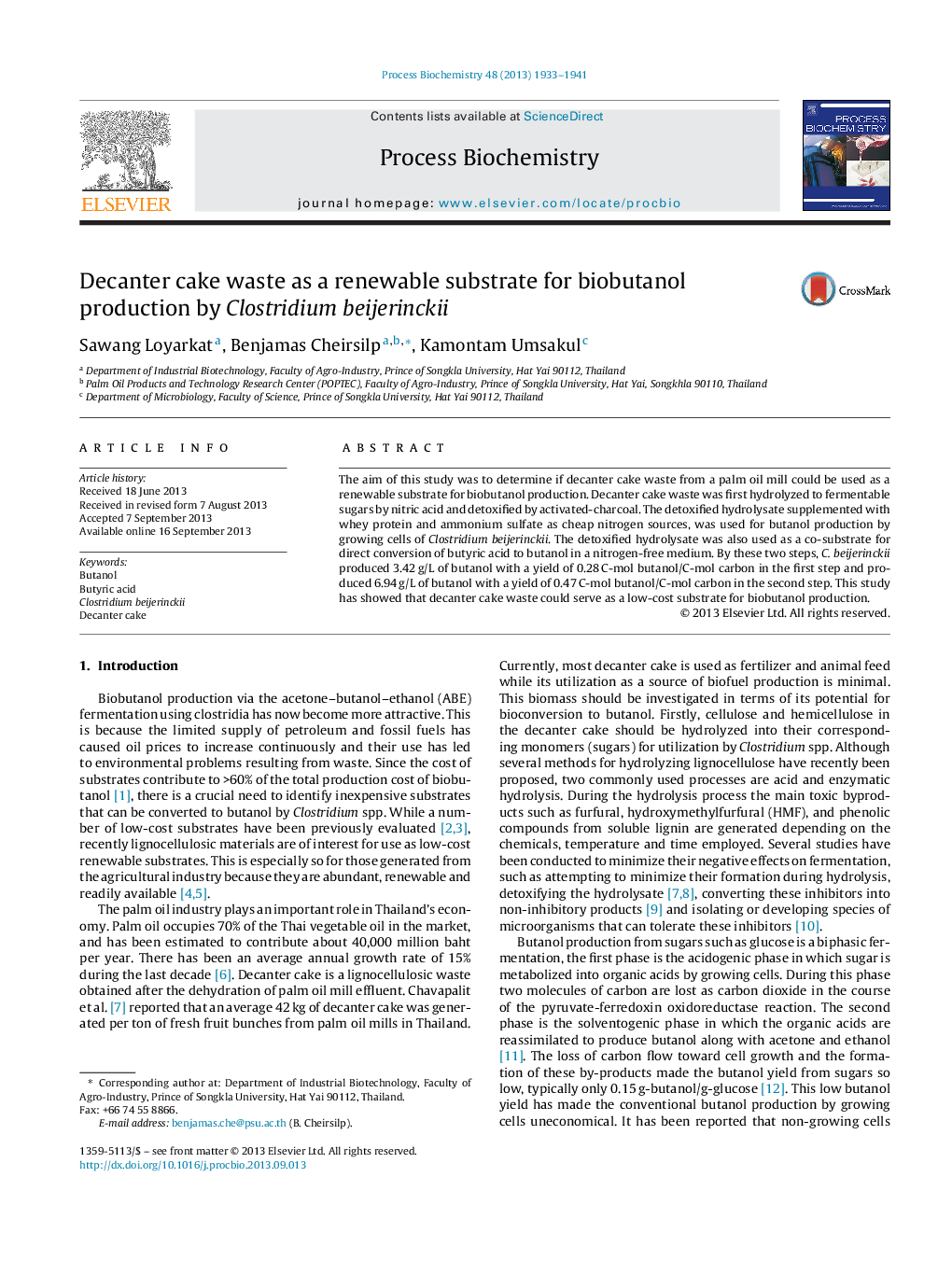| Article ID | Journal | Published Year | Pages | File Type |
|---|---|---|---|---|
| 34424 | Process Biochemistry | 2013 | 9 Pages |
•Decanter cake waste could be used as a renewable source for biobutanol production.•Decanter cake waste from palm oil mill was acid hydrolyzed and detoxified.•Detoxified hydrolysate was used as a sole carbon source for butanol production.•Detoxified hydrolysate was also used as a co-substrate for direct conversion of butyric acid to butanol.
The aim of this study was to determine if decanter cake waste from a palm oil mill could be used as a renewable substrate for biobutanol production. Decanter cake waste was first hydrolyzed to fermentable sugars by nitric acid and detoxified by activated-charcoal. The detoxified hydrolysate supplemented with whey protein and ammonium sulfate as cheap nitrogen sources, was used for butanol production by growing cells of Clostridium beijerinckii. The detoxified hydrolysate was also used as a co-substrate for direct conversion of butyric acid to butanol in a nitrogen-free medium. By these two steps, C. beijerinckii produced 3.42 g/L of butanol with a yield of 0.28 C-mol butanol/C-mol carbon in the first step and produced 6.94 g/L of butanol with a yield of 0.47 C-mol butanol/C-mol carbon in the second step. This study has showed that decanter cake waste could serve as a low-cost substrate for biobutanol production.
